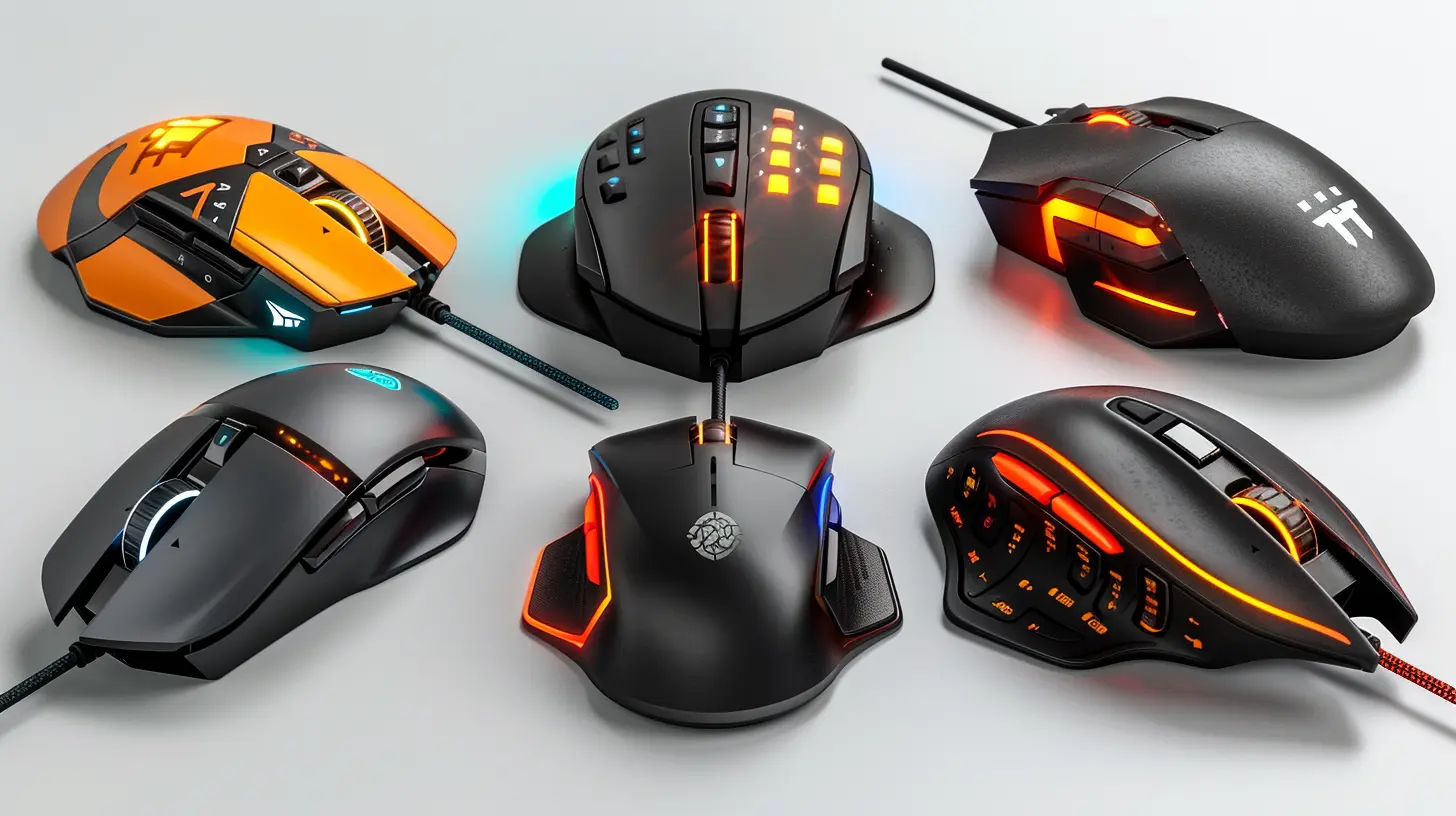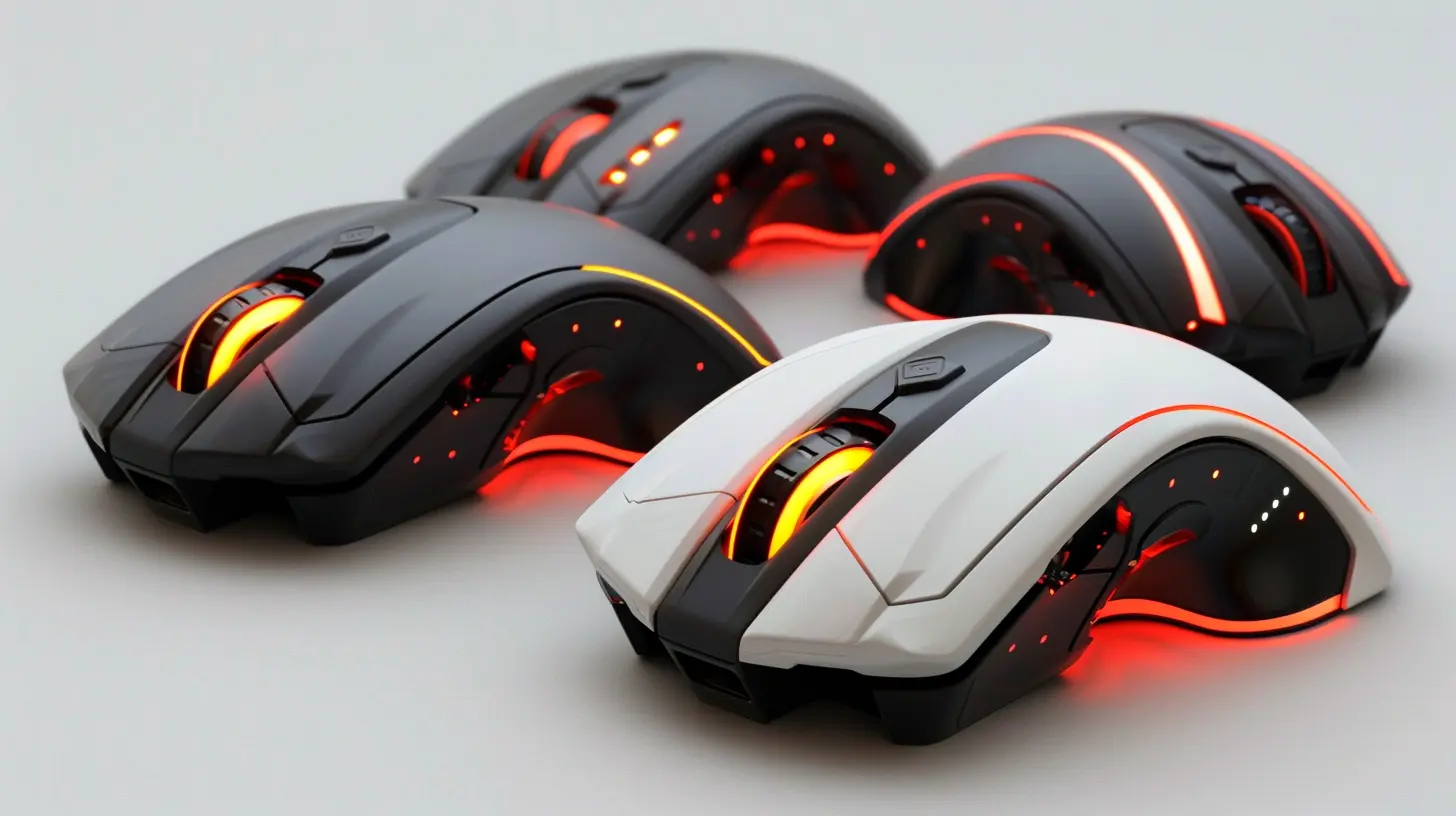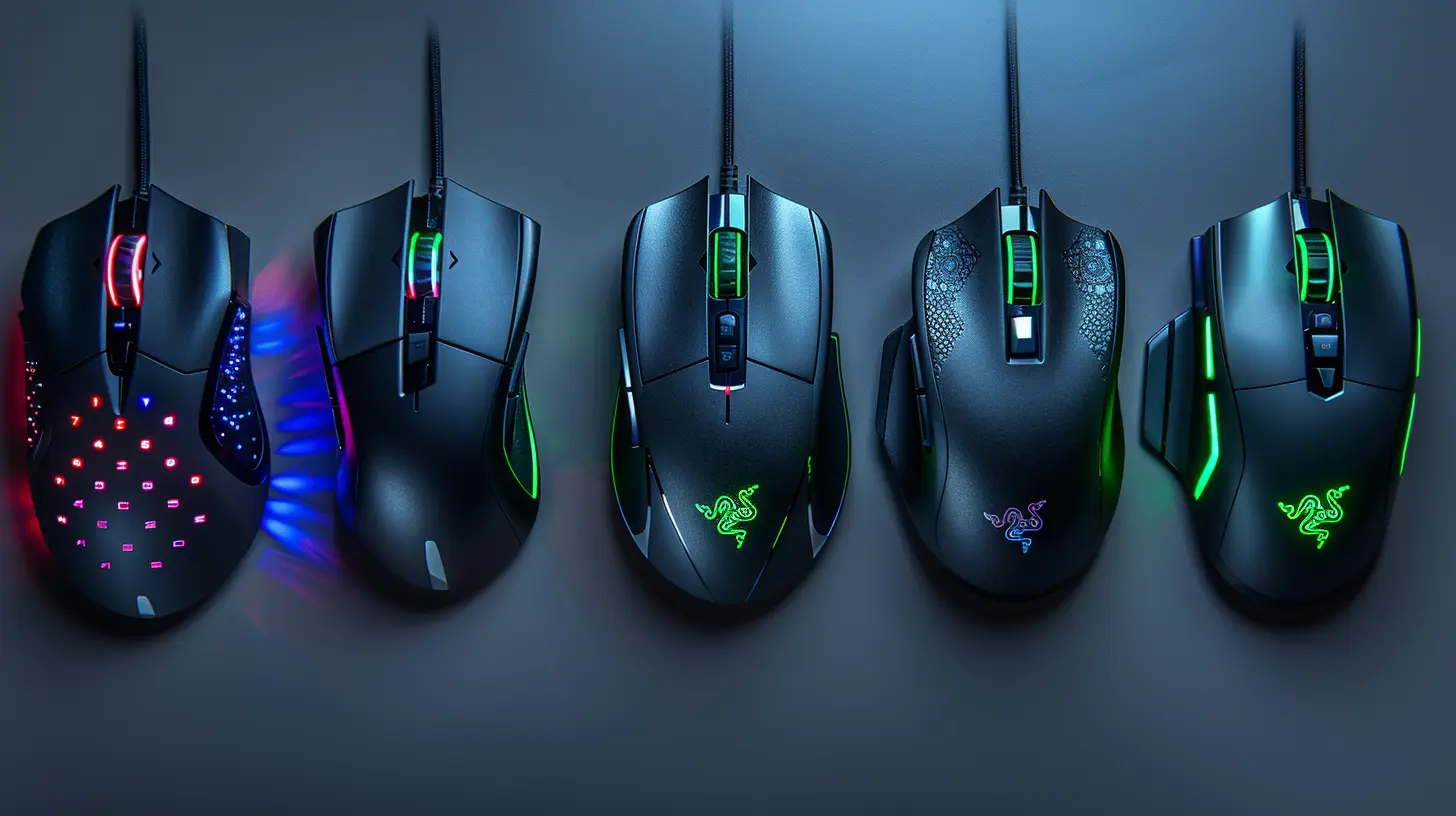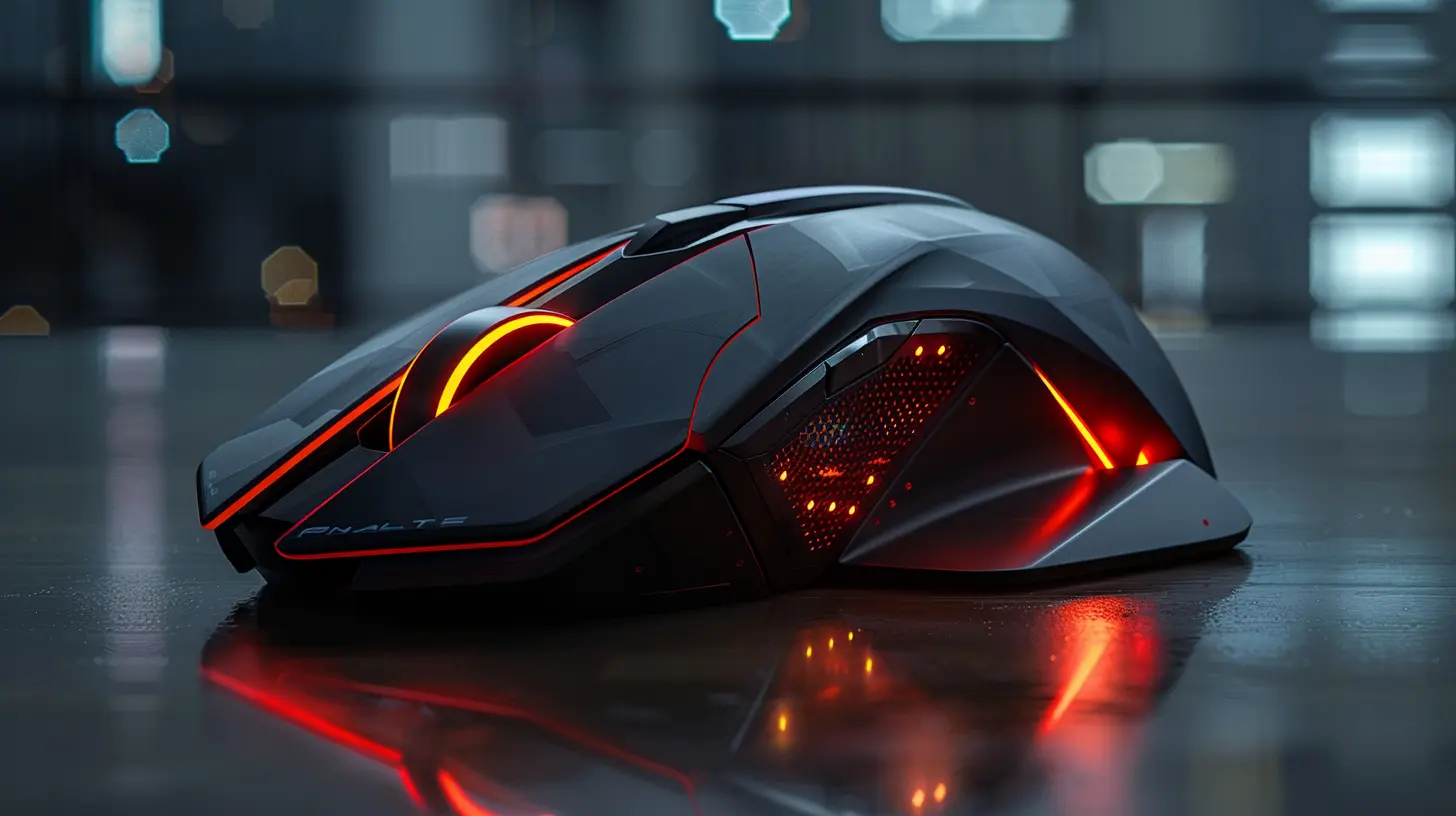Precision Play: Reviewing the Most Accurate Gaming Mice Sensors
20 October 2025
If you’ve ever lost a 1v1 at the last second because your crosshair jittered or your mouse skipped a pixel, you know one thing for sure—accuracy is everything in gaming. Whether you're sniping from a mile away in a tactical shooter or micro-managing your units in a fast-paced RTS, your mouse sensor is your secret weapon. And when it comes to fine-tuned, razor-sharp precision, not all mice are made equal.
So, you’re probably wondering, “What makes a sensor accurate?” Or maybe, “Which gaming mice are giving esports pros a competitive edge?” Well, buckle up, because in this guide, we’re deep-diving into the world of high-performance gaming mouse sensors. By the end, you’ll know exactly which ones are leading the pack in 2024—and why.
🎯 What Does “Precision” Even Mean in Gaming Mice?
Before we start name-dropping the elite-level sensors, let’s clarify what precision truly means in the gaming world.Think of your mouse as the extension of your hand. If it lags, skids, or misreads your movement, it’s like trying to draw with a crayon that randomly twitches. Precision here is measured by how accurately your on-screen cursor reflects your hand's movements. No more, no less.
When we talk about an accurate mouse sensor, we’re really talking about a few key things:
- DPI (Dots Per Inch) – How sensitive your mouse is.
- IPS (Inches Per Second) – How well the mouse tracks movement at high speeds.
- Polling Rate – How often your mouse reports its position to your PC.
- Lift-Off Distance – How high you can lift the mouse before it stops tracking.
- Acceleration – We want zero acceleration. Period.
These specs decide whether you're gaming on God-mode accuracy or floundering with frustrating inconsistency.
🧠 Optical vs. Laser Sensors: Which Is More Accurate?
Let’s clear up a common debate—optical or laser sensors?Spoiler alert: optical sensors take the win here.
Laser sensors work on more surfaces but tend to suffer from acceleration issues. That means your cursor might move faster or slower depending on how fast you're swinging your mouse—not great for consistency.
Optical sensors, especially those designed for gaming, offer raw tracking accuracy. They’re more consistent, especially when paired with a good mousepad.
So yeah, if you’re chasing pixel-perfect precision, go optical.
🏆 Top Gaming Mouse Sensors in 2024
Now let’s get into the good stuff—the best of the best. These sensors are the gold standard for pro gamers and performance junkies alike.1. PixArt PMW3395 – The Apex Predator
This one’s the current fan-favorite and for very good reasons.- Max DPI: 26,000+
- IPS: 650+
- Polling Rate: Up to 1000Hz (with 4000Hz wireless options coming in hot!)
- Lift-Off Distance: Adjustable
The PMW3395 is reigning supreme in premium wireless mice like the Lamzu Atlantis, Pulsar X2, and Finalmouse Starlight 12. It’s ultra-precise, super responsive, and incredibly power-efficient—perfect for wireless setups.
What makes this sensor stand out is how stable it is. No jitter. No spin-outs. High-speed flicks? Tracked perfectly.
2. Logitech HERO 25K – The Battery King
Logitech developed the HERO 25K in-house, and it’s impressive.- Max DPI: 25,600
- IPS: 400+
- Polling Rate: 1000Hz
- Lift-Off Distance: Low and accurate
What’s cool about this guy is that it's ultra-accurate and surprisingly efficient. It gives you top-tier performance without draining your battery. That’s why you’ll find it in mice like the Logitech G Pro X Superlight and G903 Lightspeed.
It might not have the ultra-high IPS numbers like some newer sensors, but the consistency is clutch—and the software experience is butter smooth.
3. Razer Focus+ – Smart Tracking Genius
Razer teamed up with PixArt to create the Focus+, and it’s a force to be reckoned with.- Max DPI: 20,000+
- IPS: 650+
- Polling Rate: 1000Hz (with 8000Hz option in newer versions)
- Lift-Off Distance: As low as 0.5mm (thanks to smart tracking)
Found in the Razer Viper Ultimate and Basilisk Ultimate, the Focus+ sensor isn’t just accurate—it’s smart. With features like Smart Tracking, Motion Sync, and Asymmetric Cut-Off, you get tracking that adjusts in real-time based on how you move and lift your mouse.
It’s like the James Bond of sensors—smart, fast, and deadly accurate.
4. PixArt PMW3389 – The Old Reliable
While it's a bit older now, the PMW3389 still gets the job done like a champ.- Max DPI: 16,000
- IPS: 400
- Polling Rate: 1000Hz
You'll find this sensor in budget legends like the Glorious Model O and SteelSeries Rival 600. It's not as flashy as the newer models, but it's solid, reliable, and very precise for its price bracket.
Perfect if you're upgrading from a basic office mouse and want something built for performance without breaking the bank.
5. PixArt PAW3950 – The Future Star
This is the next-gen sensor starting to make waves.- Max DPI: 26,000
- IPS: 650+
- Polling Rate: 4000Hz+ (yes, really!)
- Lift-Off Distance: Insanely low
It’s still pretty rare, but we’re seeing it pop up in bleeding-edge mice like those from Pulsar and Endgame Gear. If you're a competitive gamer who chases every edge possible, this is where the future is heading.
Think faster-than-your-eyes responsiveness with feather-light tracking. It’s sci-fi level tech.
🤔 Does DPI Really Matter?
Short answer? Not as much as you think.Most pros play at 400-1600 DPI. Crazy, right?
High DPI doesn't mean better aim—it just means your mouse cursor moves faster. Too high, and you’ll be playing like you're on an ice rink.
It’s more about sensor accuracy at your DPI setting than just chasing higher numbers. So don’t stress if a sensor can hit 30,000 DPI. Unless you're planning to teleport.
🛠️ How to Test Your Mouse Sensor’s Accuracy
So, you’ve got a high-performance mouse… now what?Here’s how you can test if your sensor lives up to the hype:
1. Try MouseTester – A free tool that plots sensor movement.
2. Play Flick Aim Trainers – See if your shots land every time.
3. Draw Circles in Paint – Smooth circles = good tracking. Wobbly mess = problem.
4. Try Fast Swipes – If the sensor skips or spins out, it’s not accurate.
If your mouse is failing any of these, no amount of software tweaks can save it. Time for an upgrade.
⚙️ Sensor Specs Aren’t Everything: The Mouse Matters Too
We’ve been singing the praises of sensors, but let’s not forget—the mouse shell, weight, build quality, and feet are just as important.A top-tier sensor in a clunky, heavy mouse is like putting a Ferrari engine in a tricycle. You won’t get far. Make sure you’re picking a mouse that fits your grip style and plays well with your mousepad of choice.
Lightweight shells, low-latency wireless tech, and quality PTFE feet make a world of difference when paired with a beast sensor.
💡 Final Thoughts: Precision Is Power
At the end of the day, your sensor is one of the most critical parts of your gaming setup. It’s the unsung hero behind every flick shot, clutch heal, or perfectly timed spell cast.If you’re serious about precision, investing in a mouse with a top-notch sensor isn’t just a luxury—it’s a no-brainer. Whether you go for the wireless wizardry of the PMW3395, the smart tracking of Razer’s Focus+, or the energy-saving HERO 25K, you're getting a tool that can seriously level up your game.
And let’s be honest—who doesn’t want to land more headshots?
—
🖱️ TL;DR — Best Gaming Mouse Sensors Today
| Sensor | DPI | IPS | Notable Mice ||--------|-----|-----|---------------|
| PixArt PMW3395 | 26,000+ | 650+ | Lamzu Atlantis, Pulsar X2 |
| Logitech HERO 25K | 25,600 | 400+ | G Pro X Superlight, G903 |
| Razer Focus+ | 20,000+ | 650+ | Viper Ultimate, Basilisk |
| PixArt PMW3389 | 16,000 | 400 | Glorious Model O, Rival 600 |
| PixArt PAW3950 | 26,000+ | 650+ | Pulsar mice (future releases
all images in this post were generated using AI tools
Category:
Hardware ReviewsAuthor:

Pascal Jennings
Discussion
rate this article
1 comments
Nadia McFarlane
Unlock your full gaming potential! Master the battlefield with the precision of cutting-edge sensors – your victory starts with every accurate click. Game on!
October 27, 2025 at 4:43 AM

Pascal Jennings
Thank you! Precision is key to gaming success, and our review highlights the best sensors for every click. Game on!


